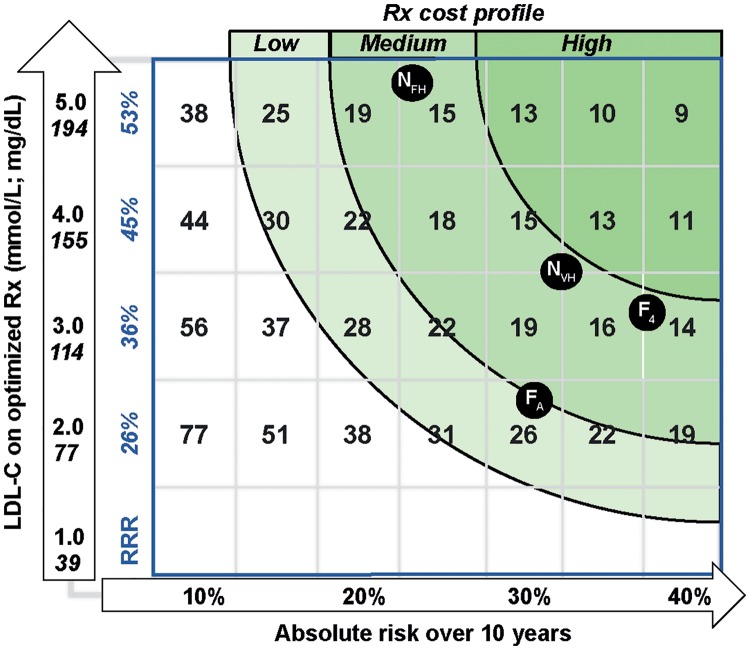Figure 1.
‘Highest risk–highest benefit’ strategy for proprotein convertase subtilisin/kexin type 9 (PCSK9) inhibitor use. The schematic shows LDL-C on optimum statin/ezetimibe therapy on the vertical axis and risk of a cardiovascular disease event on the horizontal axis. Predicted relative risk reduction (RRR) associated with a PCSK9 inhibitor-induced 60% decrease in LDL-C is in the first column. This is based on a 22% risk reduction per 1.0 mmol/L drop in LDL-C as derived by meta-regression4 and confirmed by the FOURIER investigators.8 Number-needed-to-treat (NNT) (reciprocal of the absolute risk reduction) is provided per 5% increment in risk and 1.0 mmol/L increment in LDL-C in the other columns. These are given for a 5-year timescale. Varying cost profiles are represented by the shades of green. A low-cost jurisdiction may permit NNT <30 as an acceptable threshold; medium-cost NNT <20; and high-cost NNT <15.22 For illustration purposes, markers are provided for the approximate NNT for the average FOURIER subject (FA; LDL-C 92 mg/dL, estimated annual risk 3.3%), a FOURIER subject in the top LDL-C quartile (F4; LDL-C 126 mg/dL; annual risk 3.8%),8 and the National Institute for Health and Care Excellence (NICE)-approved categories (NVH—very high-risk, i.e. polyvascular disease or multiple events, LDL-C >3.5 mmol/L; NFH—FH no event with LDL-C >5.0 mmol/L). Rx, prescription.

